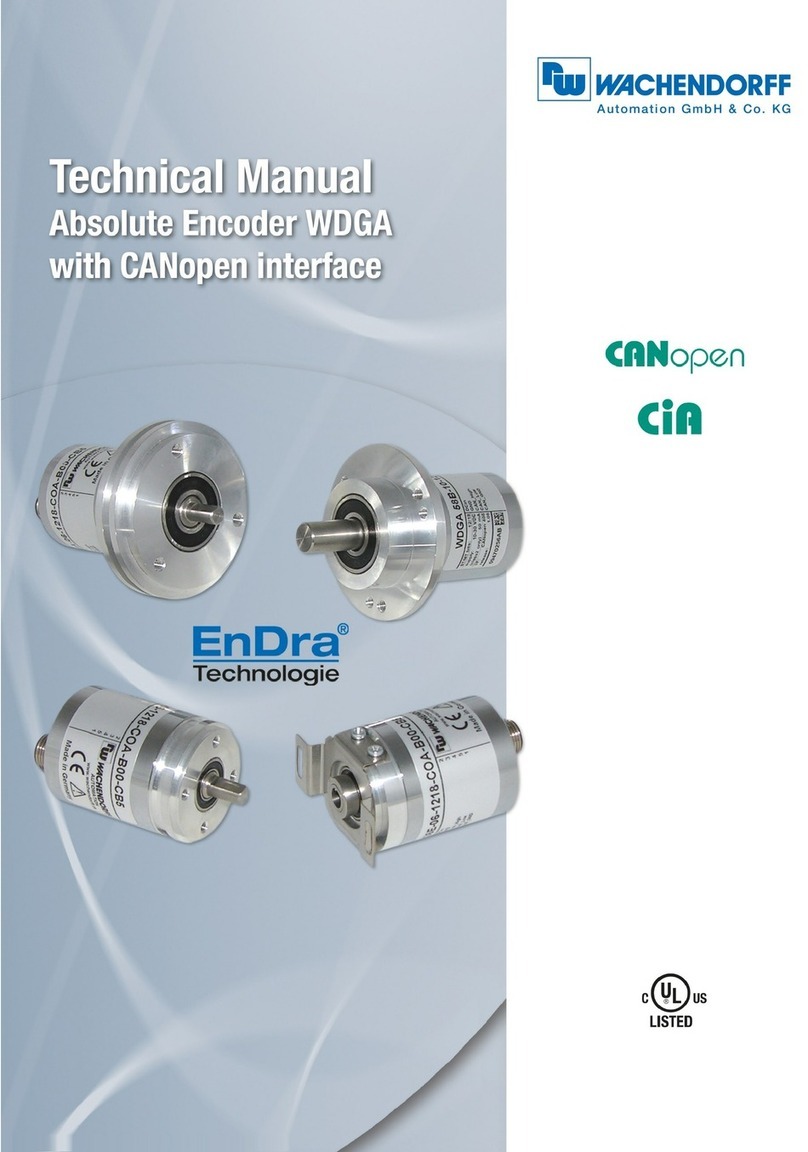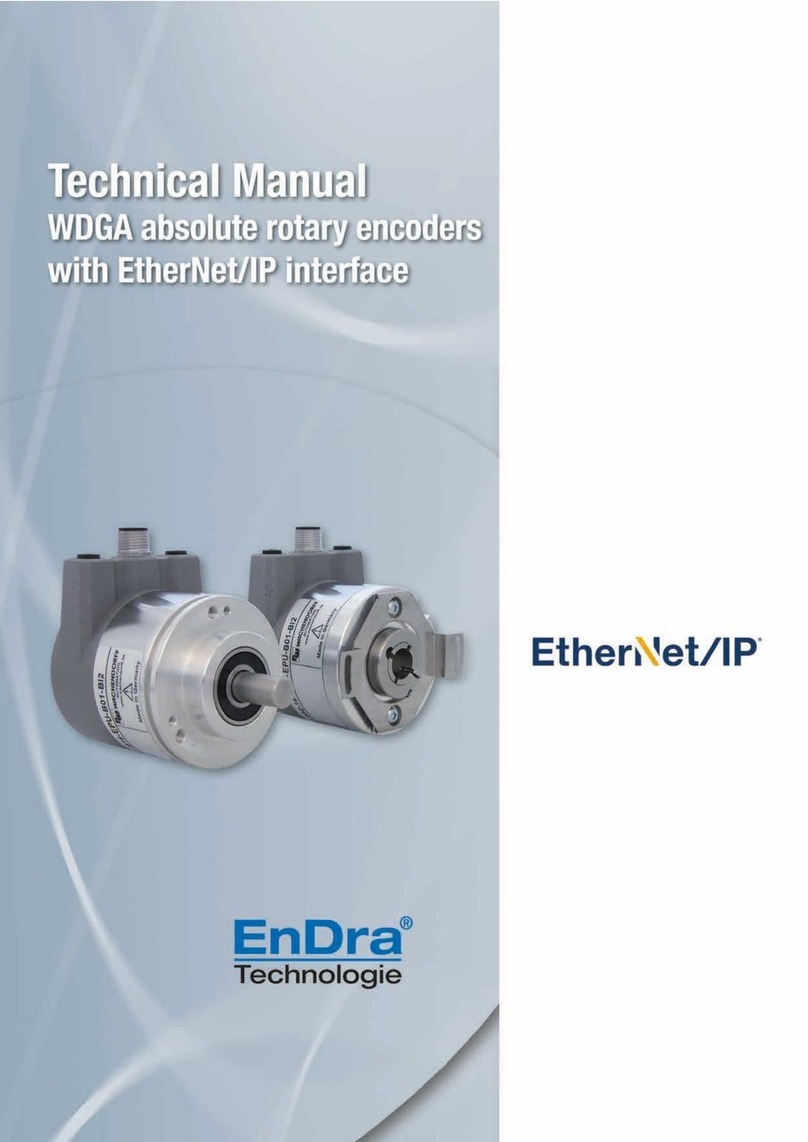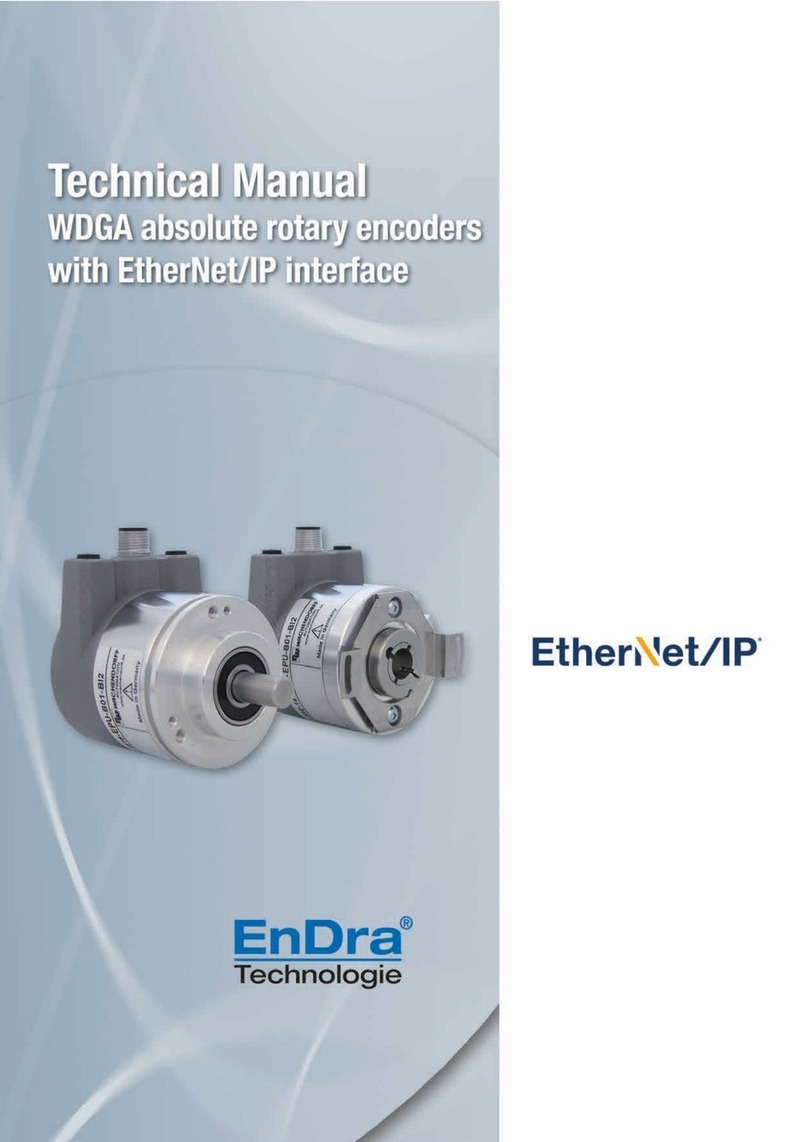
Technical Manual
WDGA with EtherCAT
© Wachendorff Automation GmbH & Co. KG
Index of tables
Table 3.1: Pin assignment........................................................................................ 11
Table 3.2: LED signals.............................................................................................. 13
Table 4.1: Summary of the encoder's functions........................................................ 15
Table 4.2: Communication protocols........................................................................ 15
Table 4.3: Object directory 1000h - 1018h................................................................ 16
Table 4.4: Object directory 10F3h - 1A00h............................................................... 17
Table 4.5: Object directory 1A01h - 1C00h............................................................... 18
Table 4.6: Object directory 1C13h - 1C33h .............................................................. 19
Table 4.6: 1001h –Error register.............................................................................. 19
Table 4.7: 1001h –Parameter storage options......................................................... 20
Table 4.8: 1011h –Parameters loading options....................................................... 20
Table 4.9: 1018h –Identity object............................................................................. 21
Table 4.10: 1010h –Identity object........................................................................... 21
Table 4.11: 1st transmit PDO default mapping (EtherCAT object 1A00h)................ 21
Table 4.12: Setup of sub-index 01 ... 08 of object 1A00h......................................... 22
Table 4.13: 2nd transmit PDO default mapping (EtherCAT object 1A01h)............... 22
Tabelle 4.14: Sync Manager communication type (EtherCAT object 1C00h)........... 23
Tabelle 4.15: Sync Manager 3 PDO assignment (EtherCAT Objekt 1C13).............. 23
Table 4.17: Sync Manager 3 synchronisation (EtherCAT Objekt 1C33h)................. 24
Table 4.16: Manufacturer-specific objects 2105h - 2902h........................................ 25
Table 4.17: Integration values (EtherCAT object 2105h).......................................... 26
Table 4.18: Frequency limit (EtherCAT object 2107h).............................................. 26
Table 4.19: Device-specific objects 6000h - 6031h.................................................. 27
Table 4.20: Device-specific objects 6009h - 6310h.................................................. 28
Table 4.21: Device-specific objects 6311h - 6321h.................................................. 29
Table 4.22: Device-specific objects 6322h - 6332h.................................................. 30
Table 4.23: Device-specific objects 6337h - 6402h.................................................. 31
Table 4.24: Device-specific objects 6410h - 6508h.................................................. 32
Table 4.25: Device-specific objects 6509h - 6510h.................................................. 33
Table 4.26: Direction of revolution and scaling parameters...................................... 34
Table 4.27: Speed selector....................................................................................... 36
Table 4.28: CAM state register - value 89h .............................................................. 36
Table 4.29: CAM state register - value 81h .............................................................. 37
Table 4.30: CAM enable register - value 4Ah........................................................... 37
Table 4.31: Example of the CAM polarity register .................................................... 37
Table 4.32: 6503h - Alarms ...................................................................................... 40
Table 4.33: Signal description .................................................................................. 41
Table 4.34: Example of profile software version....................................................... 41































